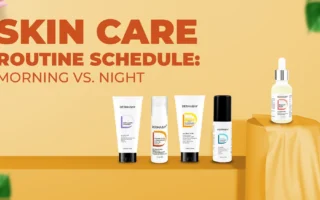Creating DIY skincare products can be a rewarding and fun experience, but there are common mistakes that can compromise safety and effectiveness. Here’s a detailed guide on what to avoid and tips for ensuring your DIY skincare is safe and effective.
1. Ignoring Skin Type and Sensitivities
- Mistake: Using ingredients without considering your skin type (oily, dry, sensitive, etc.) can lead to irritation or breakouts.
- Tip: Conduct a patch test on a small area of skin before using a new product. Research ingredients to find what works best for your specific skin type.
2. Using Unsuitable Ingredients
- Mistake: Incorporating ingredients that are not skin-friendly or can cause reactions, such as certain essential oils in high concentrations.
- Tip: Stick to known safe ingredients, especially if you have sensitive skin. Avoid harsh chemicals and allergens, and check for non-comedogenic properties.
3. Lack of Cleanliness
- Mistake: Not sanitizing tools, containers, and surfaces can lead to contamination, causing infections or spoilage.
- Tip: Always clean and sterilize your tools and containers with boiling water or alcohol before starting. Work in a clean environment.
4. Incorrect Measurements
- Mistake: Improperly measuring ingredients can result in ineffective formulations or irritation.
- Tip: Use precise measuring tools, especially when dealing with potent ingredients like essential oils. Follow recipes closely until you gain more experience.
5. Overusing Active Ingredients
- Mistake: Applying too much of a potent ingredient (like vitamin C or acids) can lead to irritation or damage.
- Tip: Start with lower concentrations and gradually increase if your skin tolerates it. Always follow guidelines on recommended usage.
6. Inadequate Preservation
- Mistake: Failing to include preservatives in water-based products can lead to bacterial or mold growth.
- Tip: Use natural preservatives (like vitamin E or rosemary extract) in your formulations, and consider adding essential oils with antimicrobial properties. For longer shelf life, store products in the refrigerator.
7. Neglecting pH Balance
- Mistake: Using ingredients that disrupt the skin’s natural pH can lead to irritation and imbalances.
- Tip: Test the pH of your formulations using pH strips and adjust if necessary. Aim for a pH close to that of natural skin (around 4.5 to 5.5).
8. Assuming All Natural Is Safe
- Mistake: Believing that natural ingredients are always safe can lead to allergic reactions.
- Tip: Research each ingredient thoroughly. Just because something is natural doesn’t mean it’s non-irritating. Be cautious with essential oils, nut oils, and botanical extracts.
9. Not Following Storage Guidelines
- Mistake: Improper storage can lead to product degradation and loss of effectiveness.
- Tip: Store products in cool, dark places in airtight containers. Be mindful of expiration dates, especially for oils and emulsions.
10. Skipping Instructions for Specific Ingredients
- Mistake: Failing to understand how to properly use certain ingredients (like activated charcoal or clay) can lead to ineffective or messy formulations.
- Tip: Read up on how to handle each ingredient. For instance, some clays need to be mixed with specific liquids for activation.
11. Not Keeping Records
- Mistake: Forgetting what worked or didn’t in past formulations can lead to repeated errors.
- Tip: Keep a detailed journal of your DIY projects, including ingredient lists, measurements, and notes on effectiveness. This will help refine your recipes over time.
12. Expecting Immediate Results
- Mistake: Expecting instant improvements can lead to disappointment and overuse of products.
- Tip: Understand that most skincare products take time to show results. Give your skin a few weeks to adjust to new formulations.




